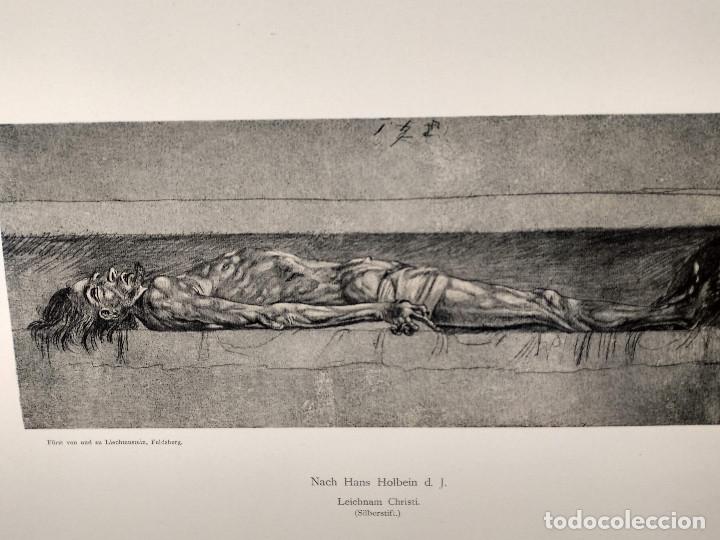
cristo muerto de hans holbein, meister albertin Comprar Láminas
Cristo muerto, dibujo al carboncillo sobre papel de Alberto Durero, 1505. [1] Cristo muerto, de Hans Holbein el Joven, 1521. [2] Cristo yacente de la iglesia de San Miguel de Valladolid, talla policromada de Gregorio Fernández.. Cristo muerto, o Cristo yacente, son las denominaciones habituales de un tema muy frecuente en el arte cristiano, tanto en pintura como en escultura.

Azzate e i Bossi Il Cristo morto di Hans Holbein (1521)
Hans Holbein, o jovem (em alemão: Hans Holbein der Jüngere) (Augsburgo, 1497 ou 1498 — Londres, 29 de novembro de 1543) foi um pintor alemão, um dos mestres do retrato no Renascimento e desenhista de xilogravuras, vidrarias e peças de joalharia.. A pintura do Cristo Morto exerceu forte influência sobre Fiódor Dostoyevski, tanto que o.

The Dead Christ in the Tomb Metal Print by Hans Holbein
Hans Holbein, o Jovem (em alemão: Hans Holbein der Jüngere). Museu do Louvre), em seu famoso "Cristo morto", na paixão (ambos no Kunstmuseum de Basileia) e no retábulo "A Virgem do burgomestre Meyer" (Palácio Ducal de Darmstadt, Alemanha), todos eles realizados entre 1519 e 1526. Nas ditas obras, se aprecia uma soltura no desenho e uma.
.jpg?mode=max)
AFTER HANS HOLBEIN II, The Body of the Dead Christ in the Tomb Christie’s
Media in category "The Body of the Dead Christ in the Tomb (Holbein der Jüngere)" The following 8 files are in this category, out of 8 total. The Body of the Dead Christ in the Tomb by Hans Holbein d. J.-Kunstmuseum Basel.jpg 2,048 × 303; 51 KB. The Body of the Dead Christ in the Tomb by Hans Holbein the Younger.jpg 2,225 × 350; 91 KB.

Pin on Arte
The Grey Passion is a series of paintings by Hans Holbein the Elder (1465-1524). Executed between 1494 and 1500, it comprises twelve panels illustrating the Passion of Christ; Holbein's monochrome palette is almost entirely grey.The paintings were purchased by the Staatsgalerie Stuttgart, the Stuttgart State Art Gallery in Germany. The State Art Gallery acquired the altarpiece in 2003 for 12.
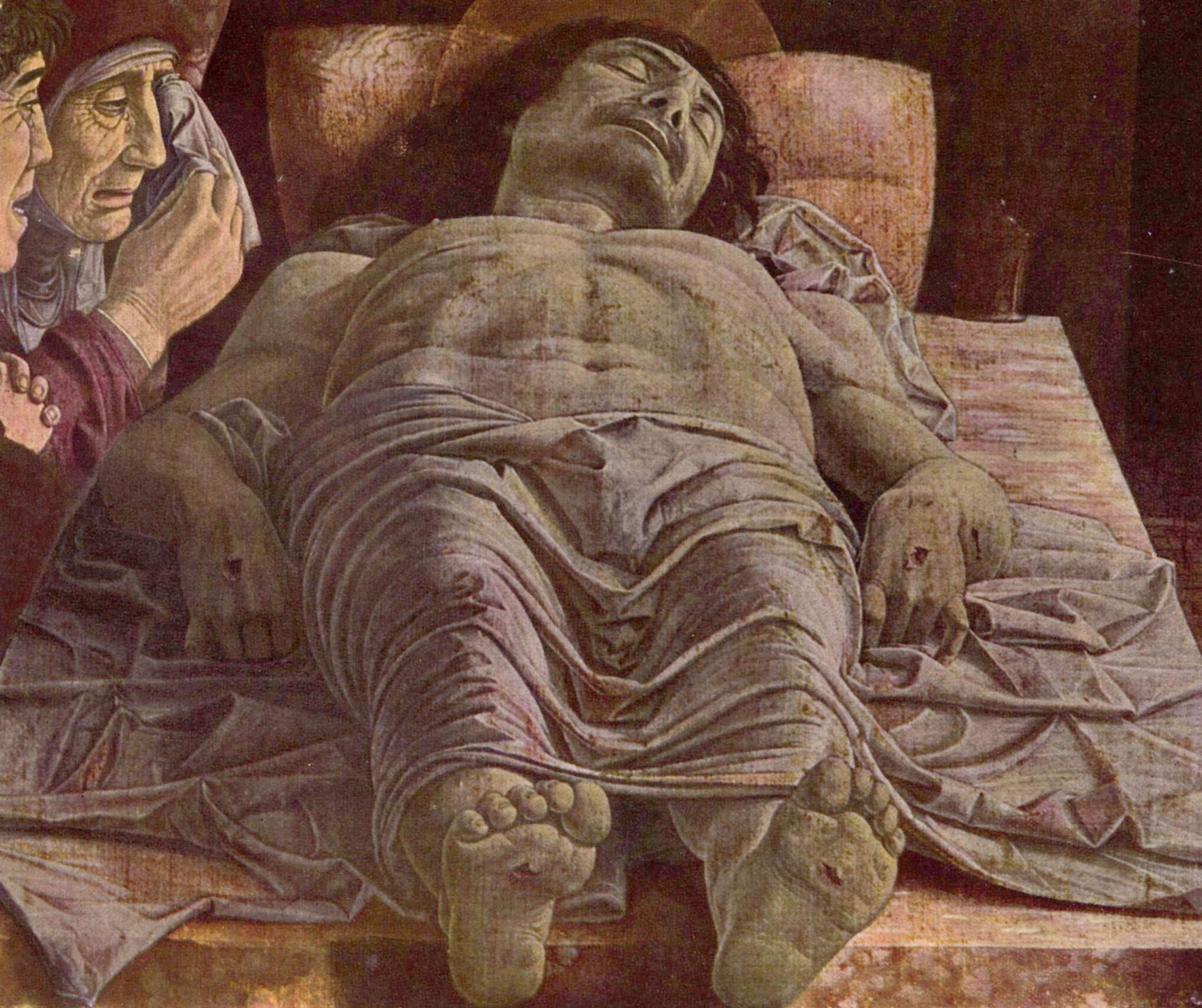
The Dead Christ (Lamentation of Christ) Andrea Mantegna
The Body of the Dead Christ in the Tomb (and detail, lower) 30.5 cm × 200 cm. Kunstmuseum Basel. The Body of the Dead Christ in the Tomb is an oil and tempera on limewood painting created by the German artist and printmaker Hans Holbein the Younger between 1520 and 1522.. It shows a life-size, grotesque depiction of the stretched and unnaturally thin body of Jesus Christ lying in his tomb.

The Vanishing Cause of History The Mainlander
"Why, some people may lose their faith looking at that picture!" Dostoyevsky famously had his fictional character Prince Myshkin exclaim over Hans Holbein the Younger's Dead Christ Entombed. 1 Almost five centuries after its creation, Holbein's image is still shocking, difficult, even repulsive. We, the viewers, are boxed into a claustrophobic space with a cadaver, and not just any corpse.
(19).jpg)
il corpo di cristo morto nella tomba, 1521 di Hans Holbein The Younger
Il corpo di Cristo morto nella tomba; Autore: Hans Holbein il Giovane: Data: 1521: Tecnica: olio su tavola: Dimensioni: 30,5×200 cm Ubicazione: Kunstmuseum, Basilea: Il corpo di Cristo morto nella tomba è un dipinto di Hans Holbein il Giovane del 1521. Descrizione. L'opera ritrae il corpo di Cristo prima della resurrezione.
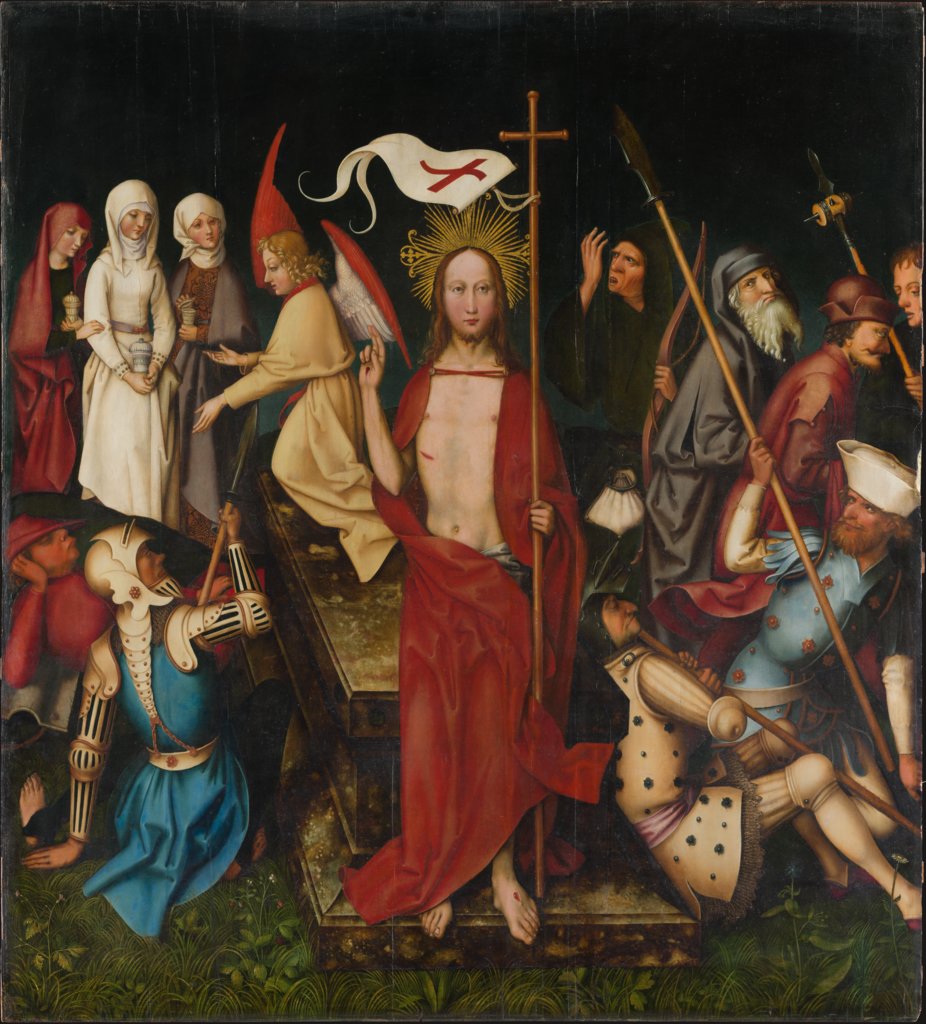
Jesus Christ Digital Collection
Il Cristo morto di Hans Holbein (1521) Le tre fasi del restauro della tela. Nella chiesa parrocchiale di Azzate, a sinistra dell'altare maggiore, sotto l'organo, è presente un dipinto piuttosto particolare: si tratta del Cristo Morto, che riproduce in modo impressionante la tela di Hans Holbein esposta al Kunstmuseum di Basilea.
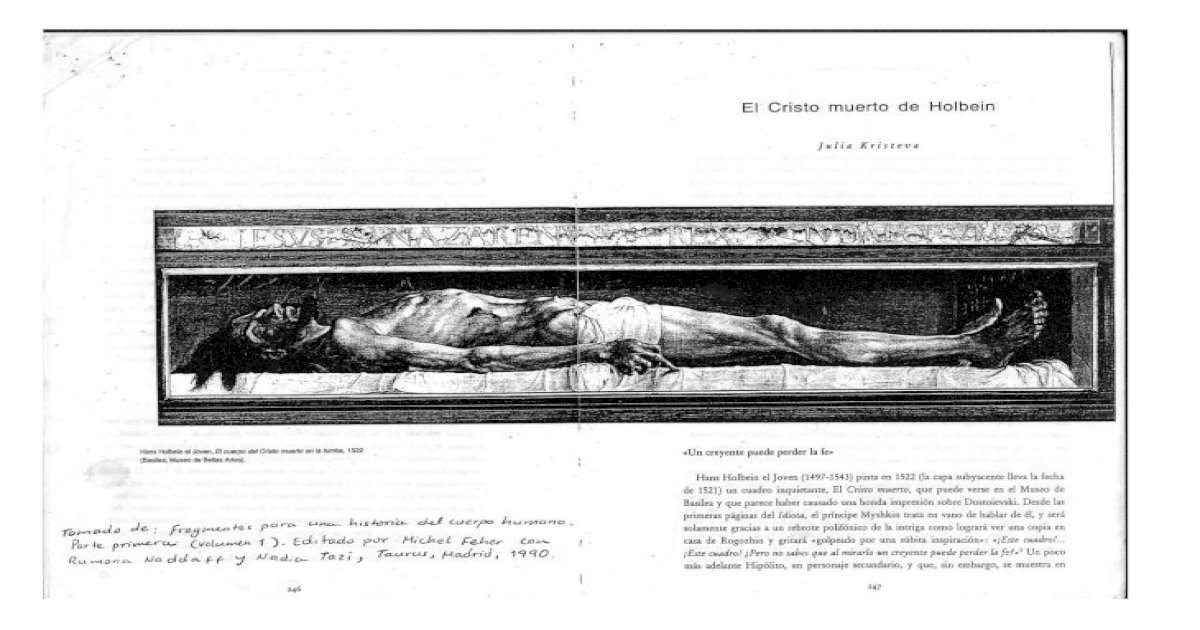
El Cristo Muerto de Holbein de Julia Kristeva [PDF Document]
The great Renaissance artist exploded into England on the run from anti-art crusaders - and his spellbinding portraits of 16th-century grandees are going on display at last

Hans Holbein 1521’de Basel’de, sonradan büyük ün kazanacak bir tablo
In un altro capolavoro del grande scrittore russo, L'idiota (1869) [3], troviamo invece due riferimenti all'impressionante dipinto di Hans Holbein il Giovane Il corpo di Cristo morto nella tomba (1521). Ne L'idiota Rogožin, amico e rivale del celebre e splendido principe Myškin, ha in casa «una copia eccellente» della suddetta opera.

Le Lettere di Ciro Il Cristo morto di Holbein il Giovane Come Gesù
Hans Holbein the Younger's The Body of the Dead Christ in the Tomb (1521—1522) depicts, in unforgiving realism, the mutilated corpse of a crucified man, claustrophobically entombed. There is no indication of who the man is in the painting per se; the identity of the anonymous criminal has be to imposed, from above as it were, in an inscription borne by angels, IESVS NAZARENVS REX IVDAEORVM.
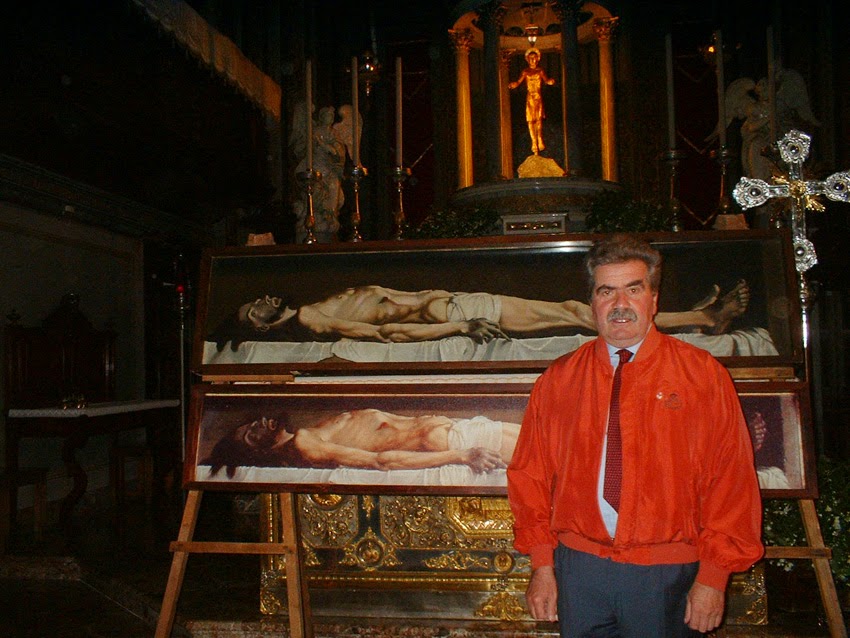
Azzate e i Bossi Il Cristo morto di Hans Holbein (1521)
The painted tomb serves purely to hold the body and display its shocking details: dark blood caked on a wound made by a spear; the ridged hollowness of the ribcage; those small, unseeing eyes.
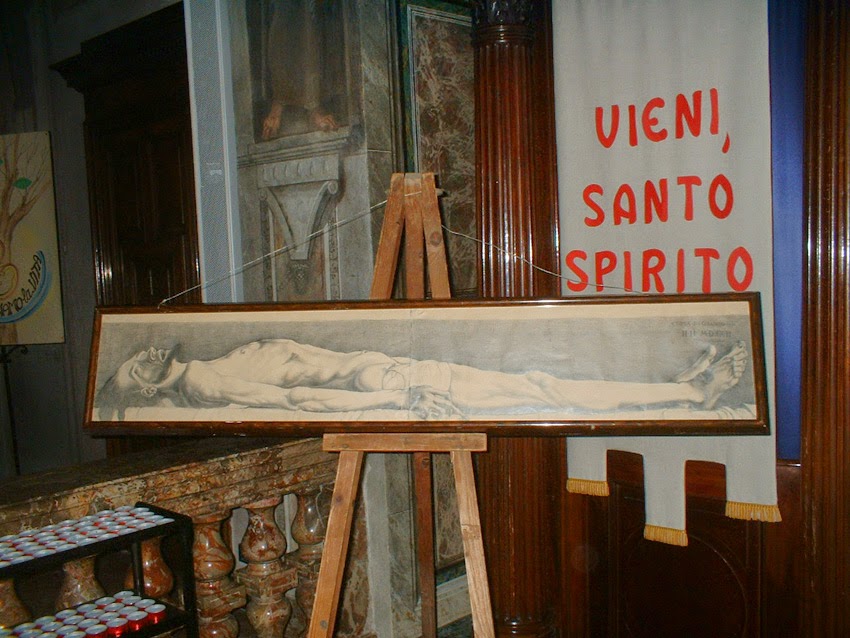
Azzate e i Bossi Il Cristo morto di Hans Holbein (1521)
encontra-se com grande força em O idiota, e na forma como a obra tematiza o Cristo Morto de H. Holbein. Entre o 'punhado de pó', a força cega de "humanitas" agindo sobre o cadáver do "Cristo Morto", e, por outro lado, a fé cristã, o autor russo propõe uma alternativa de redenção.
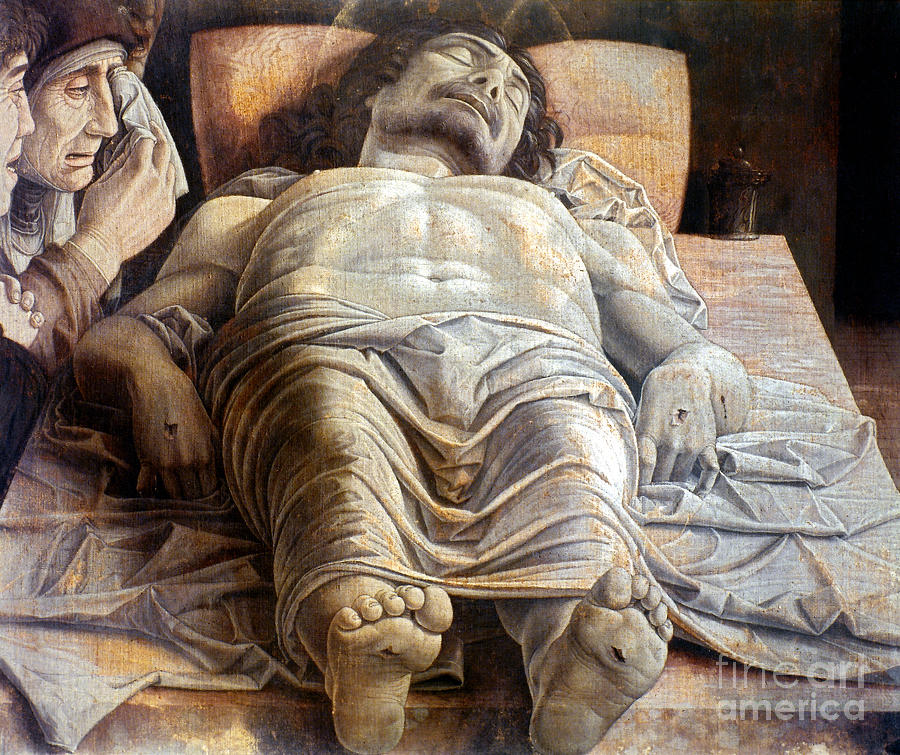
Mantegna The Dead Christ Photograph by Granger Pixels Merch
AUTOR: Hans Holbein, el Joven (1497/98 - 1543) TÍTULO: El cuerpo de Cristo muerto en la tumba MEDIDAS: 30,5 X 200 cm TÉCNICA: Óleo sobre tabla FECHA: 1521 UBICACIÓN: Museo de Bellas Artes de Basilea. Hans Holbein 'El Joven', fue el segundo hijo del pintor del mismo nombre Hans Holbein 'El Viejo'.

CRISTO MORTO Flanders or South German 17th century Fruitwood Wood
The Body of the Dead Christ in the Tomb, by Hans Holbein the Younger, 1521, Kunstmuseum, Basel. 'One could lose one's faith from that picture.'. Those were the words of Fyodor Dostoevsky to his wife Anna on seeing this painting of a 'startlingly dead' Christ in the Swiss city of Basel in 1867. She dragged the great Russian novelist.